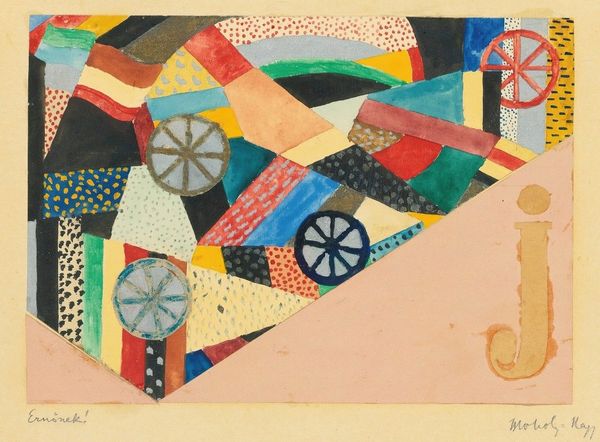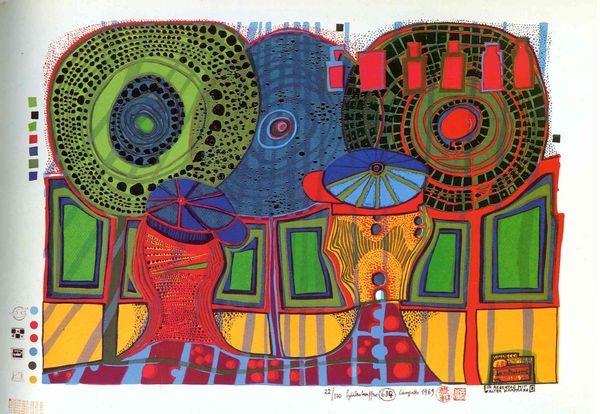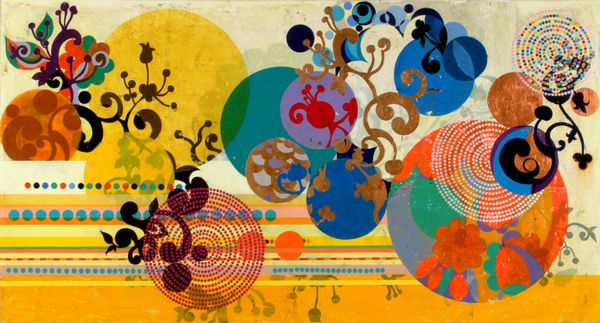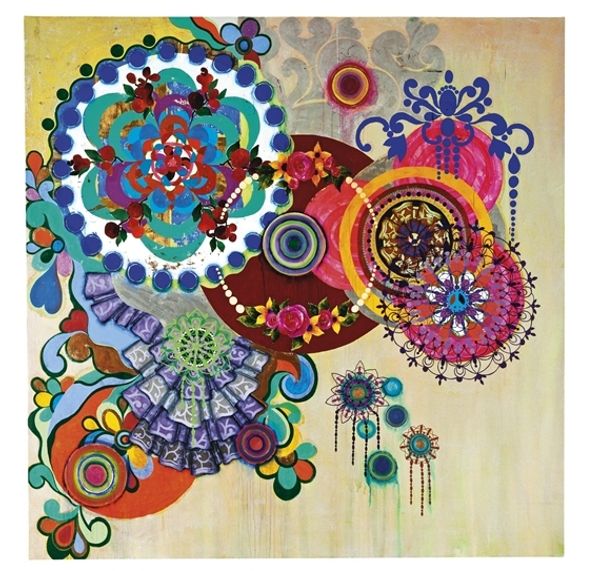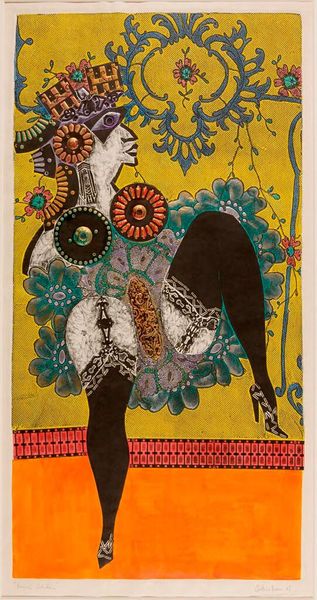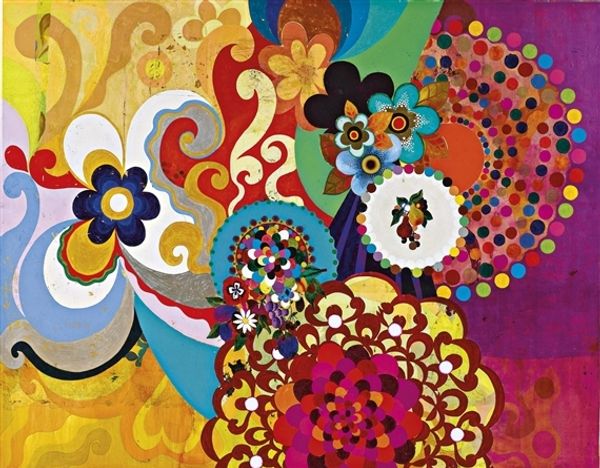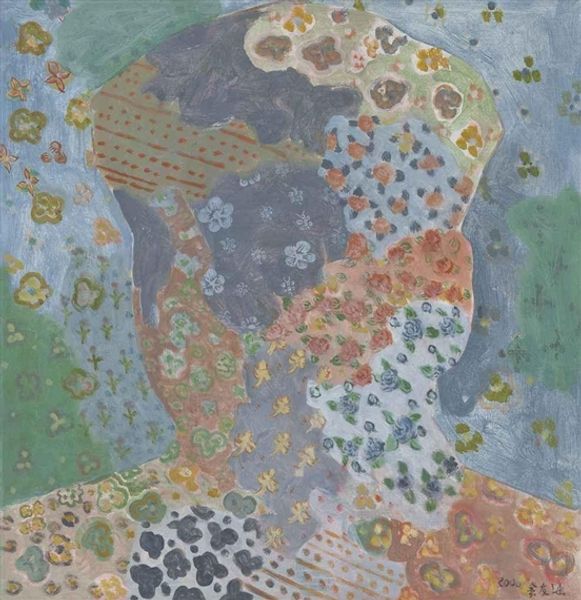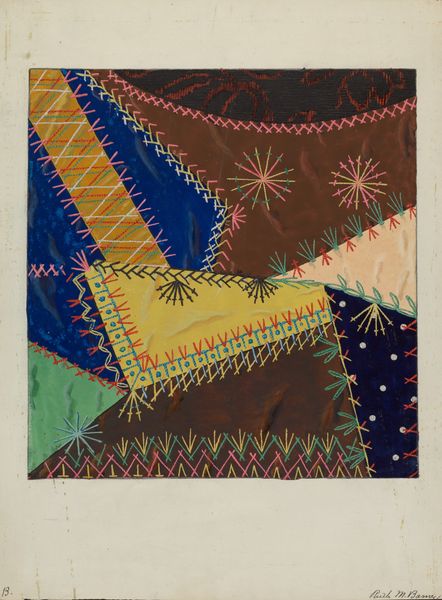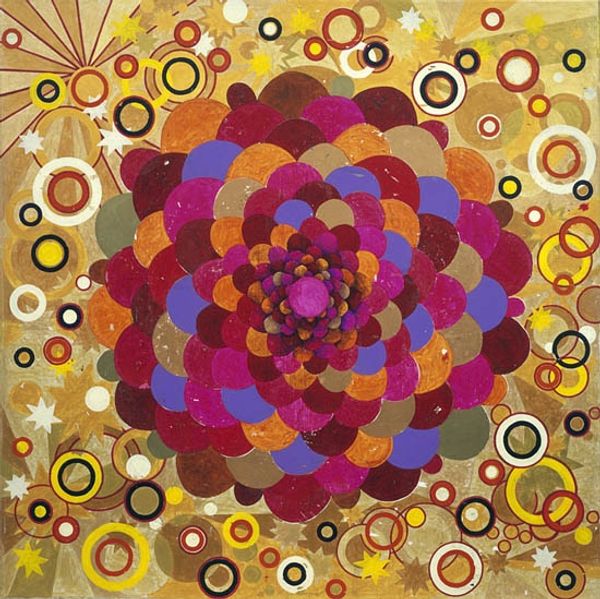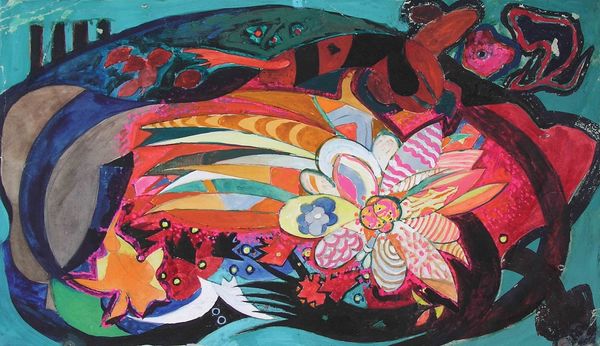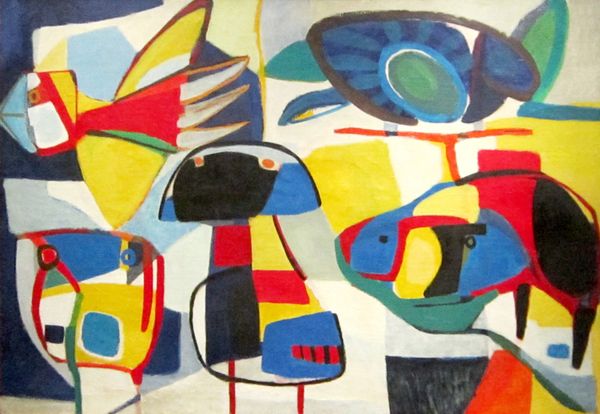
textile
#
pasteup
#
water colours
#
circle
#
textile
#
collage layering style
#
folk art
#
painted
#
mural art
#
text
#
handmade artwork painting
#
paste-up
#
spray can art
#
painting art
Dimensions: 192 x 300 cm
Copyright: Beatriz Milhazes,Fair Use
Curator: Here we have Beatriz Milhazes's "The Kiss," a 1995 piece that deploys a fascinating collage layering style. I am immediately struck by its joyful dynamism, a visual feast of pattern and form. Editor: Yes, a feast indeed. The way she arranges those geometric forms, mostly circles and semi-circles, sets up complex relationships within the picture plane. Consider the central vertical blue band, a potent stabilizer amidst the whirling decorative elements. Curator: Ah, and speaking of stabilizing elements, that vertical element, centrally placed, reminds me a bit of an axis mundi, a sort of world tree. What's so compelling to me is the intersection of the seemingly random placement of objects with clear culturally loaded signifiers. Look at the prominence of heart shapes; those, of course, suggest romantic love. Editor: I see your point, but let’s focus more carefully on how those symbolic forms operate pictorially. The repeated circular motifs—do they act as a visual echo, resonating with the rounded form of a kiss itself? Notice how their varied sizes create depth, a kind of perspectival game amidst the flatness of the collage. Curator: Perspective is there, of course, but Milhazes' folk-art-inspired paintings are anything but traditionally rendered. Each component part of the collage—what appears to be hand-made watercolours, fragments of textiles, et cetera—seem almost divorced from their original contexts. So the meaning, such as it is, comes not simply from what is seen but in its deconstruction and recombination. I note also a sense of collage, of something handmade. Editor: Precisely. And what appears as randomness reveals, on closer inspection, a carefully orchestrated arrangement. The artist deploys overlapping planes, pushing and pulling the viewer's eye across the textile substrate. Each element, regardless of its symbolic baggage, adheres to this central pictorial logic. I should also observe how that textured background introduces some subtle variations that affect the other colors. Curator: That manipulation—it is through visual experience that one apprehends the symbol itself. I will confess that despite all our attempts to categorize or explain the image, "The Kiss," ultimately defies our full understanding. Editor: Precisely. It lingers, resisting easy consumption. It stays, ultimately a testament to the complex, intricate beauty inherent in formal arrangement.
Comments
No comments
Be the first to comment and join the conversation on the ultimate creative platform.

